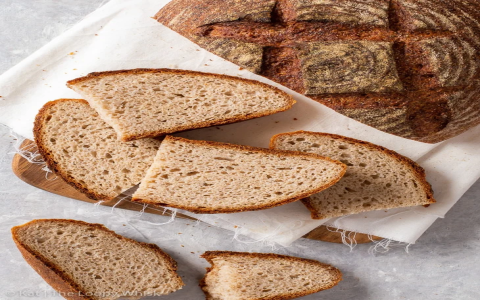Okay, so I’ve been trying to wrap my head around this whole gluten-free thing lately. My sister’s got celiac disease, and whenever she comes over, I feel bad that I can’t offer her any of the baked goods I usually make. So, I decided to dive into the world of gluten-free baking, and let me tell you, it’s a whole different ball game!

I started with the basics – trying to find a decent gluten-free bread flour. Now, I’m no expert, but I quickly learned that you can’t just swap out regular flour for gluten-free flour and expect the same results. Nope, it’s way more complicated than that.
My first attempt was…well, let’s just say it wasn’t pretty. I grabbed a bag of gluten-free flour blend from the store, followed a recipe I found, and ended up with a dense, crumbly mess. It tasted okay, but the texture was all wrong. It didn’t rise like regular bread, and it was more like a brick than a fluffy loaf.
So, I did some more digging. I read that gluten-free flours don’t have the same protein structure as wheat flour, which is what gives bread its elasticity and chewiness. Apparently, you need to add other stuff to mimic the properties of gluten. Things like xanthan gum, which acts as a binder, and starches like tapioca or potato starch to help with the texture. It was like a science experiment in my kitchen!
I went back to the store and bought some individual ingredients: rice flour, potato starch, tapioca starch, and that xanthan gum stuff. I found a recipe that used a blend of these flours, and I meticulously measured everything out. This time, I also paid more attention to the liquid ratio. I learned that gluten-free doughs tend to be wetter than regular doughs.
- Mixing: I mixed all the dry ingredients first, then slowly added the wet ingredients. The dough was sticky and definitely wetter than I was used to.
- Proofing: I let the dough rise in a warm place, just like the recipe said. It did rise a bit, but not as much as regular bread dough.
- Baking: I baked it in a preheated oven, and the aroma that filled my kitchen was actually pretty good!
The result? A much better loaf of bread! It wasn’t perfect, but it was definitely edible. It had a decent crust, and the inside was soft, although still a bit denser than regular bread. But my sister loved it! She said it was the best gluten-free bread she’d had in a long time.

What I’ve Learned
Gluten-free baking is a challenge, that’s for sure. But it’s also kind of fun to experiment and learn new things. It turns out that creating a good gluten-free bread is more than just following a recipe; it is about understanding how different ingredients work together. I’ve still got a long way to go, but I’m excited to keep trying and see what other delicious gluten-free goodies I can create. And, for now, it’s amazing to see my sister enjoy my baking again.
